Excerpts from Jim Conrad's
Naturalist Newsletter
from the June 26, 2016 Newsletter issued with notes from the Lacandon Reserve in Chiapas, MÉXICO
PACAYA PALM
In mid April when I was in the Lacandon community of Lacanja Chansayab in Chiapas's Lacandon Reserve in extreme southeastern Mexico, an interesting palm grew in a corner of the informal little family campground where I pitched my tent. It was about 15 feet tall (5m) and I couldn't figure out what it was. You can see it below:
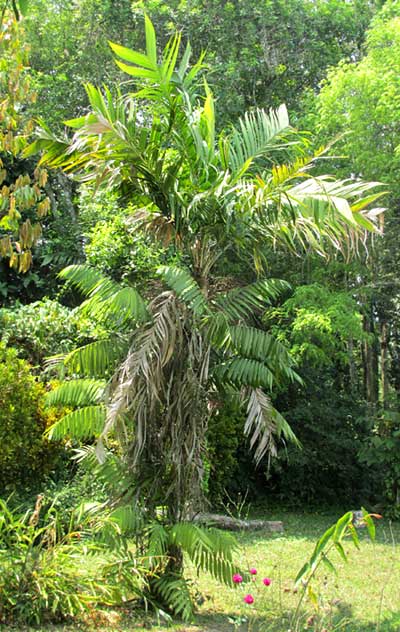
The palm bore a large, panicle-type cluster of immature fruits arising from thick, brightly orange subdivisions of the panicle's stems, or rachillas, as shown below:
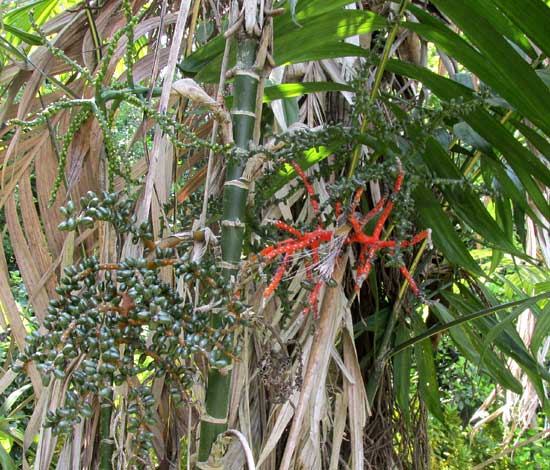
That general kind of palm fruiting cluster, with olive-like fruits on thick, orange rachillas, occurs on a well known palm genus, Chamaedorea. Chamaedorea palms are thought of as small species frequenting the shadowy understory of humid tropical American forests. Because they're so shade tolerant and often survive potting, sometimes they're known as parlor palms. You've probably seen Chamaedoreas in mall and bank lobbies, and fancy doctor offices.
But, ten species of the Palm Family are listed for Chiapas's Lacandon Reserve, and half of those species belong to the genus Chamaedorea. Therefore, the question now became, "Which Chamaedorea species is this?" In preparation for "doing the botany" when I got back to the Internet, I began paying attention to our palm's field marks.
First, it was interesting how the fronds' leaflet, or "pinna," tips fused together to form "fishtails," as shown below:
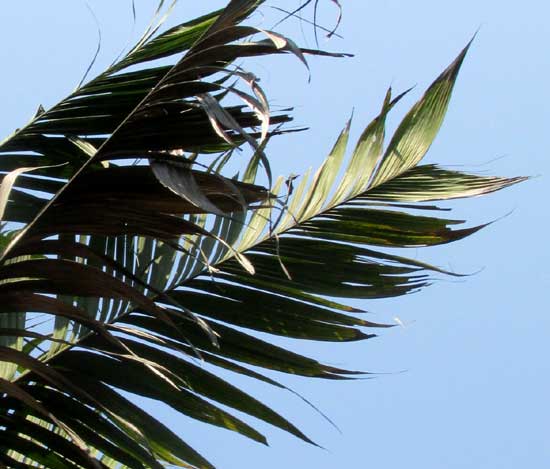
In that picture also notice that the pinna tips gradually diminish to long, slender, almost needlelike points. Such "drip tips" often occur on many kinds of plants living in rainy areas. In north-central Yucatan, in Yucatán state, we have a Chamaedorea palm but its pinna tips lack such well-developed drip tips.
Some Chamaedorea species produce single trunks while others have clustered trunks. Our species was a clustering type, as shown below:
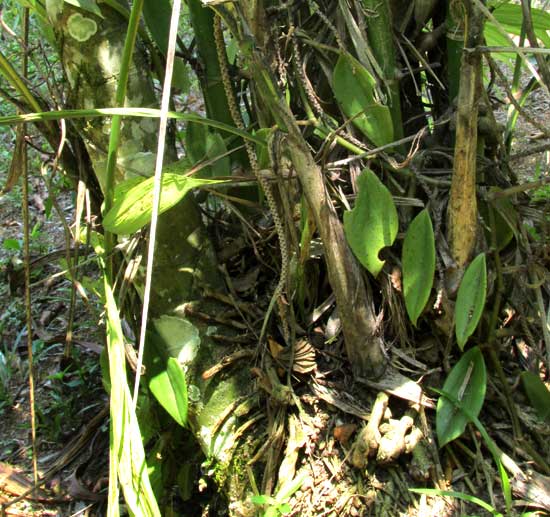
Most Chamaedorea species I know are small with slender stems. This one, however, had a main trunk that was fairly large for a Chamaedorea, as shown below:
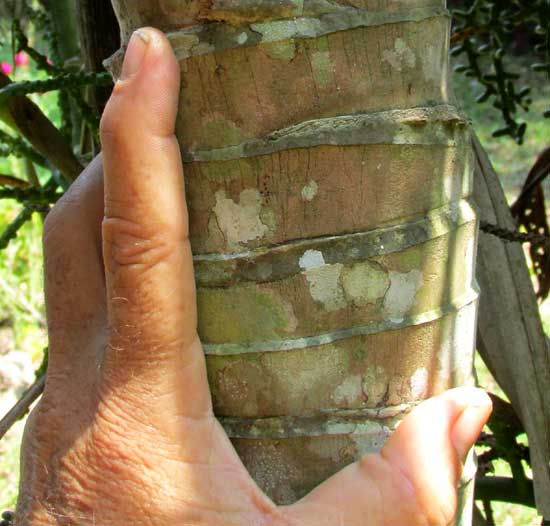
Once I had an Internet connection I began looking for pictures of Mexican Chamaedorea palms whose frond tips formed little fishtails. Fronds of Chamaedorea pinnatifrons did that, so at the wonderful PalmPedia.Net website I studied that species' description. There it plainly said that Chamaedorea pinnatifrons produces single trunks, plus it described it as not growing as tall as ours. And our palm just didn't look like pictures of the other Chamaedorea species listed for the Lacandon Reserve.
So, I checked into the equally wonderful palm-talk forum at PalmTalk.Org, posted my pictures and the above observations, and asked for help.
Pretty soon "Nico94" in Créteil, France suggested Chamaedorea tepejilote. Then "Stone Jaguare" in Guatemala City agreed, adding that the Chamaedorea pinnatifrons I'd thought of "... from that general area are the 'neurochlamys ecotype' and are, indeed, solitary. They have bean-shaped fruit that ripen orange-brown, not black." Then "Gyuseppe" in Naples, Italy, appeared, with questions about Chamaedorea pinnatifrons, and before long we'd all learned a lot about a group of similar looking palms occurring in the general area.
At first I just couldn't believe that this was Chamaedorea tepejilote. Ever since the early 1970s when I worked on Maya-ruin-visiting boat trips in northern Guatemala's Petén region I've known that species as the Pacaya palm. It's famous if only because throughout much of its distribution area from southern Mexico south through Central America to Columbia in South America, its heads of immature, unopened male flowers are sold in traditional markets for use as a vegetable or in salads. It's such a favored food that it's grown commercially, especially in Guatemala. Eating the cooked inflorescence is a little like nibbling on an ear of boiled corn.
Also, Pacaya is a very common palm. In fact, in the forest seen behind our photographed one, I photographed much smaller, less developed Pacaya Palms as I know them, planning to tell you about them here. Below, you can see the small trees, in the shade almost looking like large ferns:
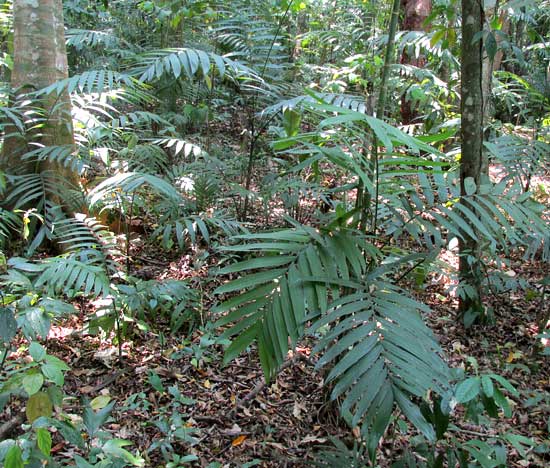
This isn't the first time I've been tricked by a species I'm accustomed to seeing in deep shade, growing much larger and more robustly when living in the open.
One new piece of information about the Pacaya, resulting from this exercise, appeared in a paper entitled "Actividad hipoglucemiante de Chamaedorea tepejilote Liebm. (pacaya)," in a 2013 edition of the Revista Cubana de Plantas Medicinales." There, J. Riquett Davinson and Erwin Solórzano report that Pacaya extract may be an acceptable treatment for diabetes, saying that "the administration of 300 mg/kg of Chamaedorea tepejilote extract to normal mice reduced blood glucose levels by 29.77 %."
from the May 4, 2019 Newsletter with notes from an April, 2019 camping trip into northern GUATEMALA'S Petén department
PACAYA PALM WITH ROOTING INTERNODES
Last month, on April 1, as I wandered forest trails between Maya ruins in Ceibal Archaeological Park in northern Guatemala's Petén department, palm trees abounded, especially a small-growing species with pinnately compound leaves, like the ones shown below, in a clearing beside a ruin:
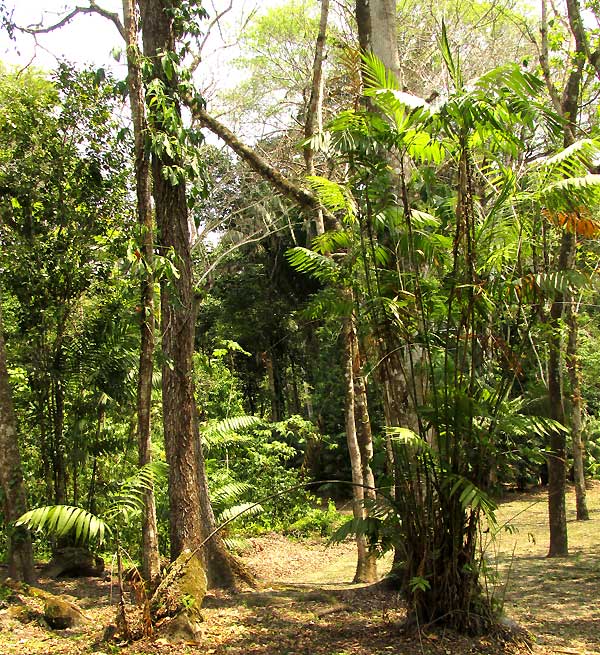
This looks like a very common palm species in this region's remaining patches of forest, Chamaedorea tepejilote, sometimes known as the Pacaya Palm. However, notice that from the base of the clump of larger palms on the right, a dark, slender stem arcs to the base of the smaller palm at the left. I'd never seen a Pacaya Palm do that. Another view of the arcing stem is shown below:
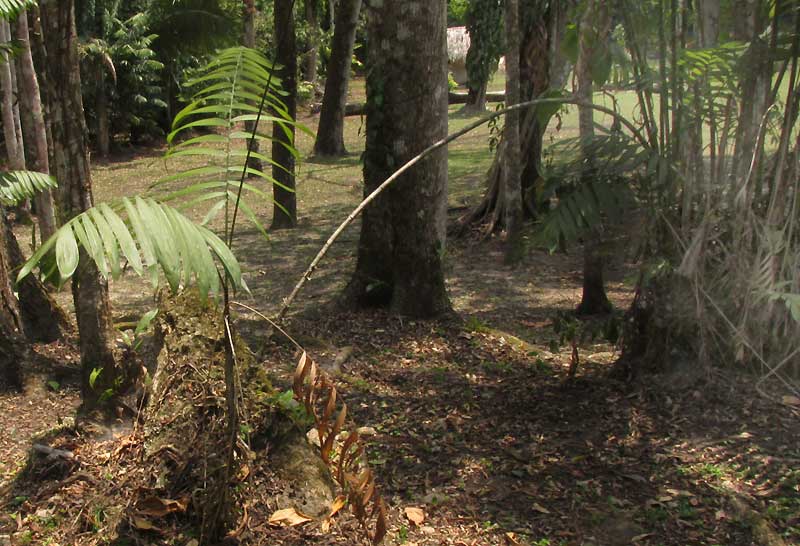
Once closer attention was paid to this species' appearance, I found its stems often producing clumps of thick aerial, adventitious roots so heavy that the stems leaned away from the clump, as shown below:
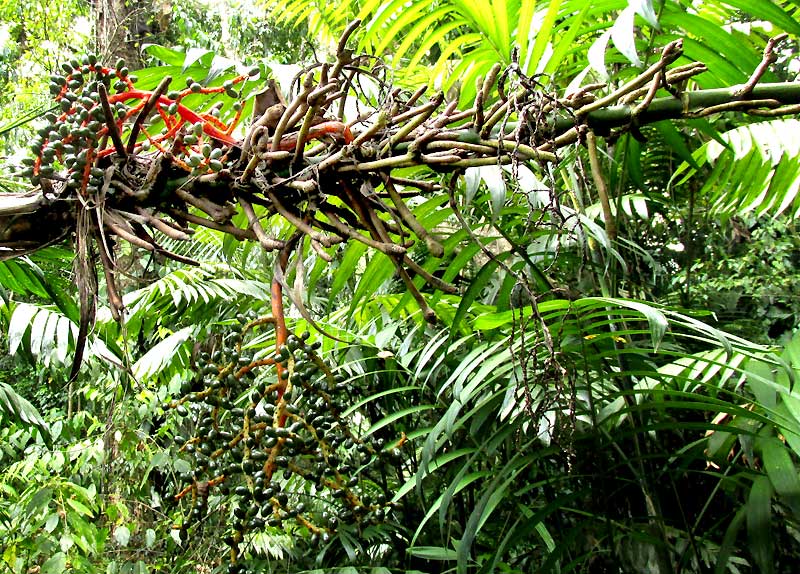
A close-up showing how the roots emerge from stem internodes is shown below:
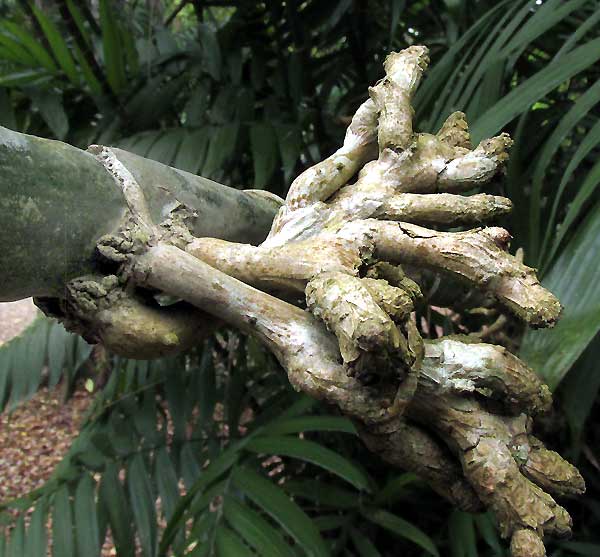
Convinced that this must be a different species than the Chamaedorea tepejilote I was so familiar with, for identification purposes I photographed a fruiting structure, shown below:
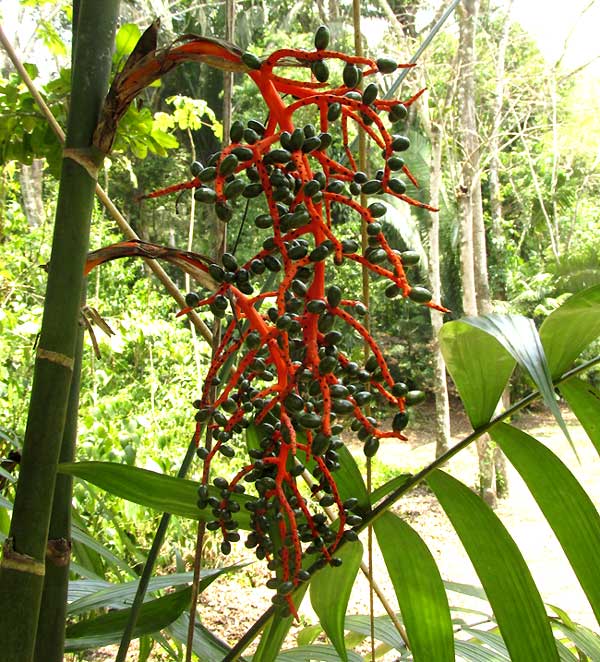
On the Internet, however, all the above field marks led right to the common Chamaedorea tepejilote, and the Flora de Veracruz was good enough to state that this species often produces numerous adventitious roots on its stem.
So, nothing new here, except that I personally have enlarged my understanding for, and appreciation of, the Pacaya Palm, Chamaedorea tepejilote.